Last part of Sarita’s travel diary of her Sacred Tour in Ladakh. Visiting Ensa Monastery, Lake Pangong and return to Leh via Chang Pass
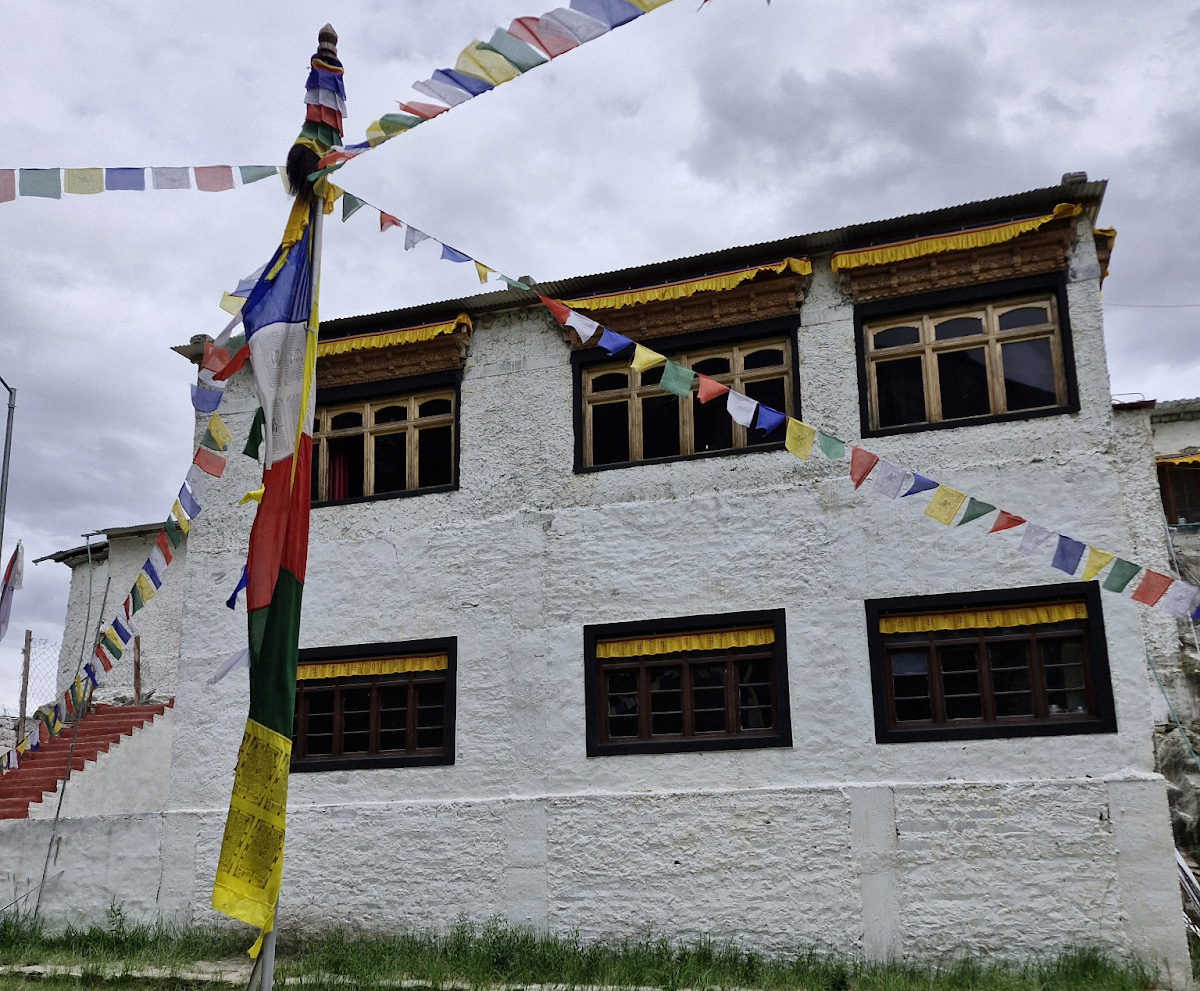
Excursion in the Nubra Valley to
· Ensa Monastery
Saturday, 19 July 2025
Rahi, our tireless organiser, insisted we leave immediately after an early breakfast. His reasoning was not superstition but survival: in Ladakh, the summer sun melts glaciers at a rapid pace, and by midday, mountain streams can swell into flash floods. Roads that look perfectly passable at 9am may turn into gushing torrents by 2pm. We learned quickly to respect his wisdom.
Ensa Monastery
After a one hour’s drive we reached Ensa Monastery, a little-visited gem whose origins trace back to the 15th century. Perched high on a hill above the Nubra River, it is surrounded by legends. Oral tradition tells of the wandering monk Sherab Zangpo, renowned for his mystical abilities, including the power of flight. The story goes that while searching for an ideal site for the Dalai Lama’s palace, he had alighted at Ensa, disguised as a beggar. The villagers, seeing only rags, treated him with disdain. But by rejecting him, they forfeited the chance to host what could have become Tibet’s spiritual heart. History instead crowned Lhasa with that honour, and Ensa remained a quiet sentinel overlooking the valley.
The monastery itself radiates a sense of age. In the courtyard, a towering tree spreads its branches like a guardian that has witnessed centuries of devotion. The oldest section lies in partial ruin, under slow renovation, its murals weathered but still striking. Among them, one detail startled us, a few paintings of Buddhas with breasts. At first, I wondered whether this temple had once been dedicated to a feminine Buddha, which would have been radical within Ladakh’s male-dominated monastic traditions. A monk explained that these images symbolised the androgynous nature of the Buddha, transcending dualities. His answer made me smile, though it also highlighted how rare it is for religious institutions to openly honour women.
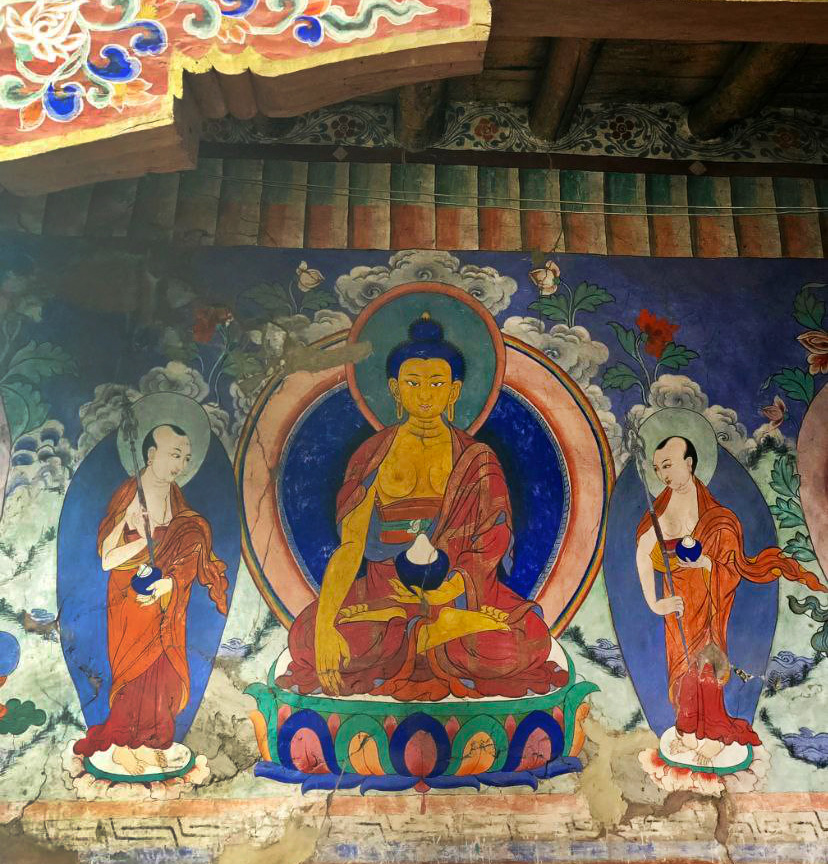
Already climbing the steps to the newer sanctum, I entered meditation. The stillness there felt thick, almost palpable. As I sat, I sensed what could be called the whispers of a new dawn, a spirituality that will no longer be confined to caves, monasteries, or ascetics. For centuries, Sat Chit Ananda – truth, consciousness, bliss – was thought attainable only by those who renounced human experience: emotion, eroticism, joy. Yet sitting in Ensa, I felt strongly that humanity is shifting. The possibility of this unified field of consciousness belongs equally to women and men, to monks and mothers, to lovers and seekers alike.
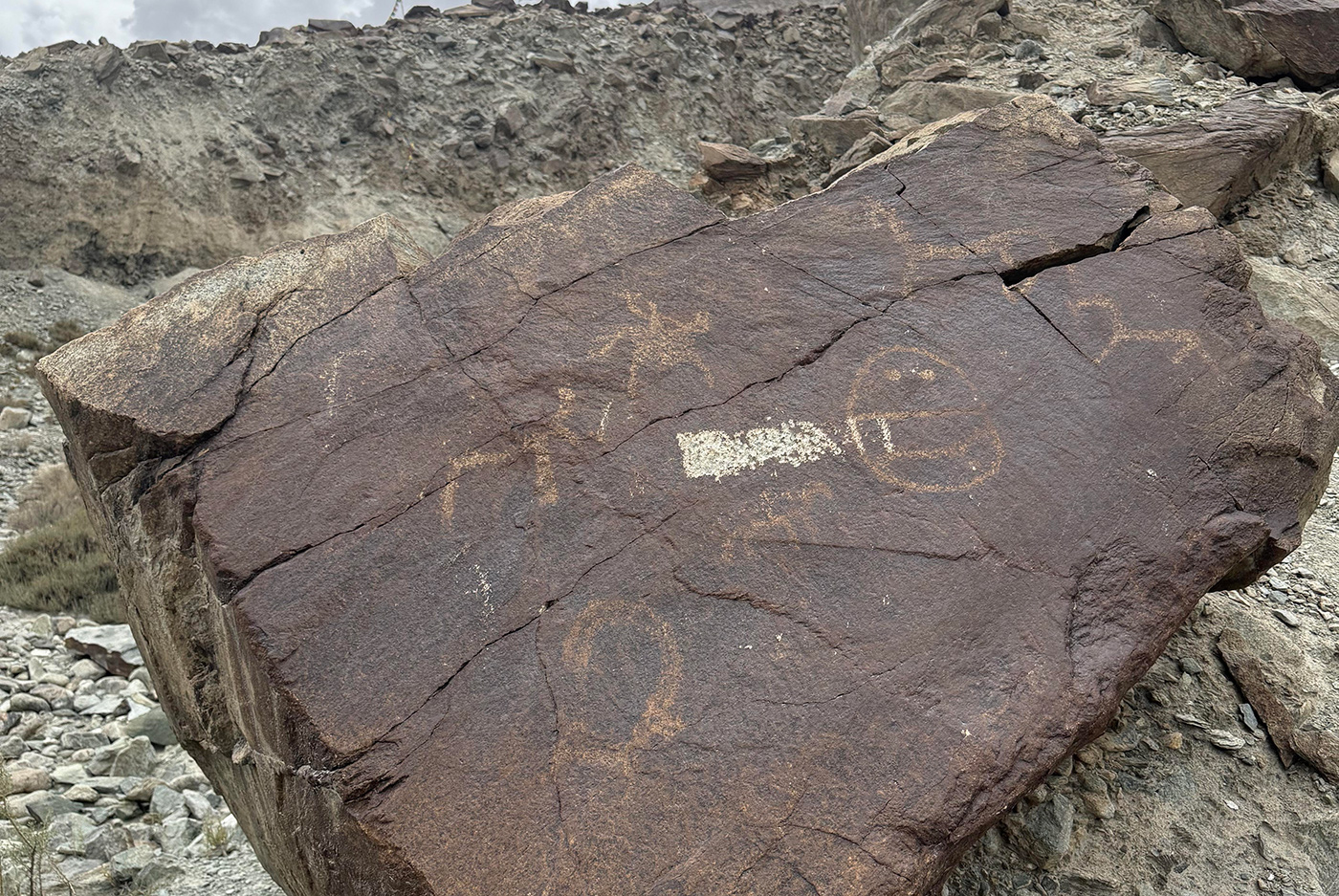
More petroglyphs
From the monastery we continued to another set of ancient petroglyphs, carved into boulders that scatter the valley floor. Some are believed to be over 10,000 years old, remnants of Stone Age hunter-gatherer communities. At first, we saw fresh graffiti, two names inside a heart pierced with an arrow, modern love scrawled over ancient reverence. But after some searching, the real carvings emerged: ibexes etched in sharp lines, their horns curving like crescents. Archaeologists say these were sacred animals, worshipped as symbols of survival and abundance. As I looked closer, I imagined hunter-shamans invoking the spirit of the ibex, calling them telepathically closer so their tribes could be nourished. In those carvings, I felt the echo of chants, incantations, and the primal intimacy between human beings and the wild.
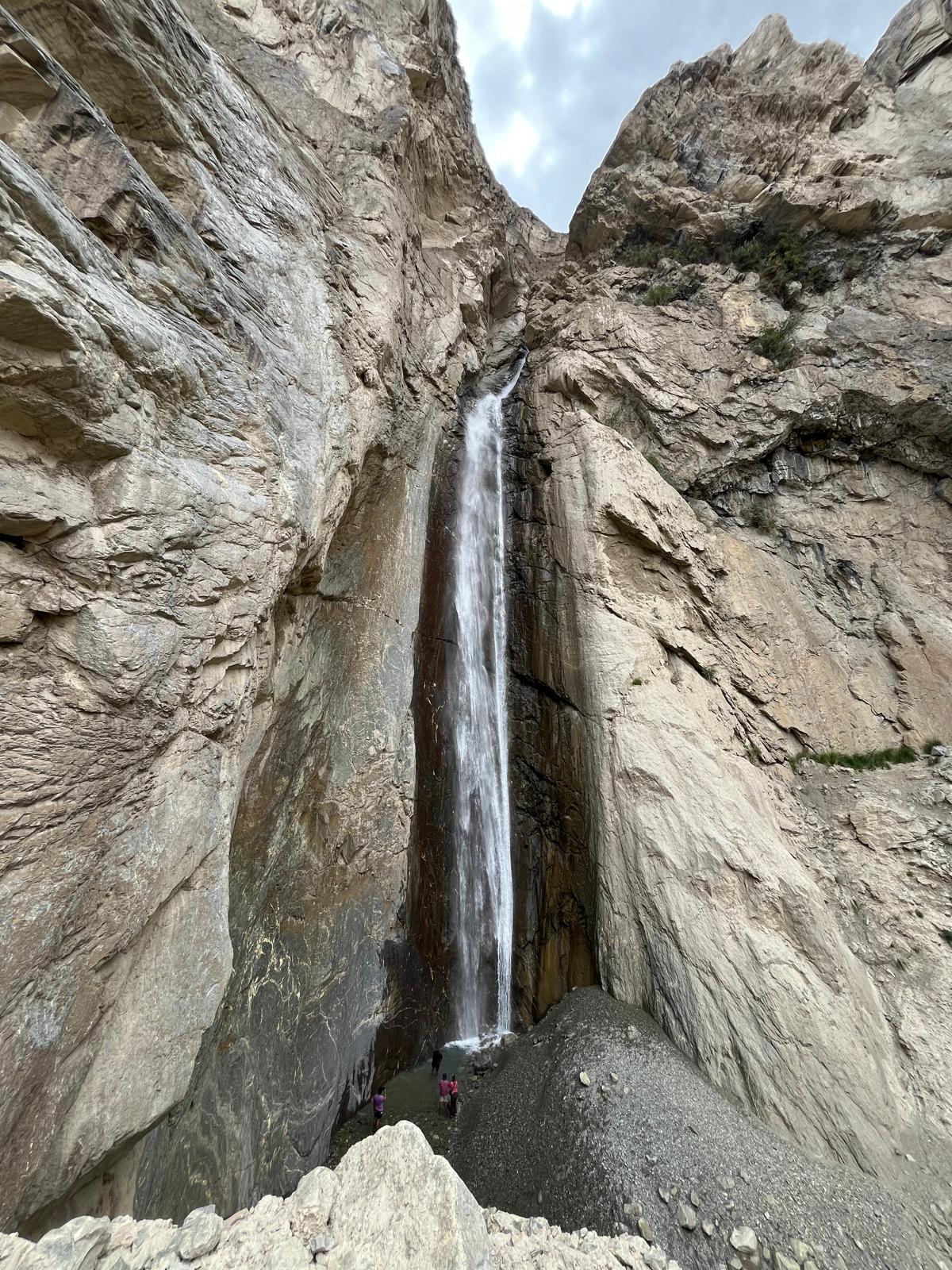
Murgi waterfall
A short ride brought us to the Murgi waterfall, a cascade tumbling down from glacial heights. Its sound filled the valley like a hymn. Here, our resort staff had somehow managed to deliver a lavish picnic, laid out as if the forest itself had prepared it. Eating beneath the roar of falling water was unforgettable, nature’s theatre and dining hall in one.
The return journey was more dramatic. By late afternoon, the snowmelt had transformed the road into a coursing stream. Our driver negotiated his way carefully across what looked like a riverbed more than a highway. Had we been minutes later, the crossing might have been impossible. It was a sobering reminder of Ladakh’s fragile and ever-shifting environment.
That evening, back at our retreat, we shifted focus. Our small team gathered to decorate the meeting room in preparation for a three-day immersion into the Vigyan Bhairav Tantra. Having spent days visiting monasteries and outer sanctuaries, it felt timely to turn inward, to explore our own Inner Temple.
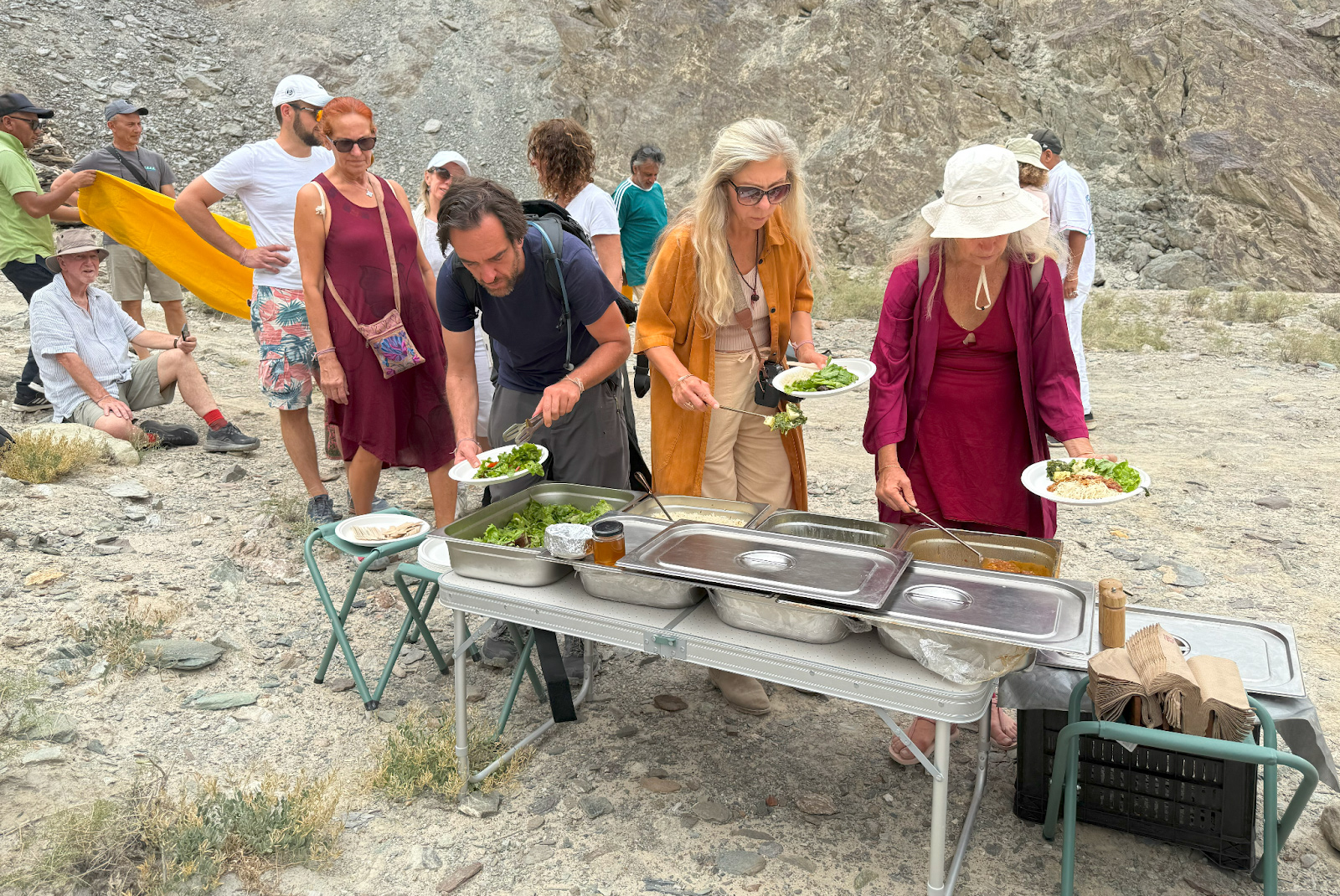
From July 20–22, Lchang Nang Retreat became our monastery. Each day we practised meditations from the Vigyan Bhairav Tantra, ancient methods of sensory awakening using breath, sound, touch, and slow, mindful movement. In the silence of the Nubra Valley, these practices took on a profound depth.
By the time we left to continue our travels, something had shifted. The group carried a new quality of presence, more grounded, more tender, more awake. When we stepped into the cold wind and raw beauty of Pangong, our next destination, we were no longer just tourists seeing another lake. We were pilgrims meeting the sacredness of nature with newly-cleansed eyes.

Journey to
· Pangong Tso (Lake)
Wednesday, 23 July 2025
We rose at 4:30am to finish packing, slipping quietly through the hushed resort to meet the group in the lobby by 5:30. For the road ahead the staff, ever so thoughtful, had prepared neatly packed picnic breakfasts for each of us.
At 6am, we departed for the fabled Pangong Tso, a lake that has stirred poets, monks, and travellers alike for centuries.We were told that at an altitude of 4,400 meters (13,862 ft), Pangong Lake stretched across the high Himalayan plateau, that its body was shared between Ladakh and Tibet, its waters both Indian and Chinese, and partly disputed in between.
Our planned route was blocked by an avalanche of rocks, a reminder of how alive these mountains are. Forced to take the longer way, we faced eight hours of driving and two high passes. The effort was rewarded. Each turn revealed vistas that defy description: mountains in hues of copper and violet, valleys etched by glacial rivers, and skies so crystalline they felt closer than the air we breathed.
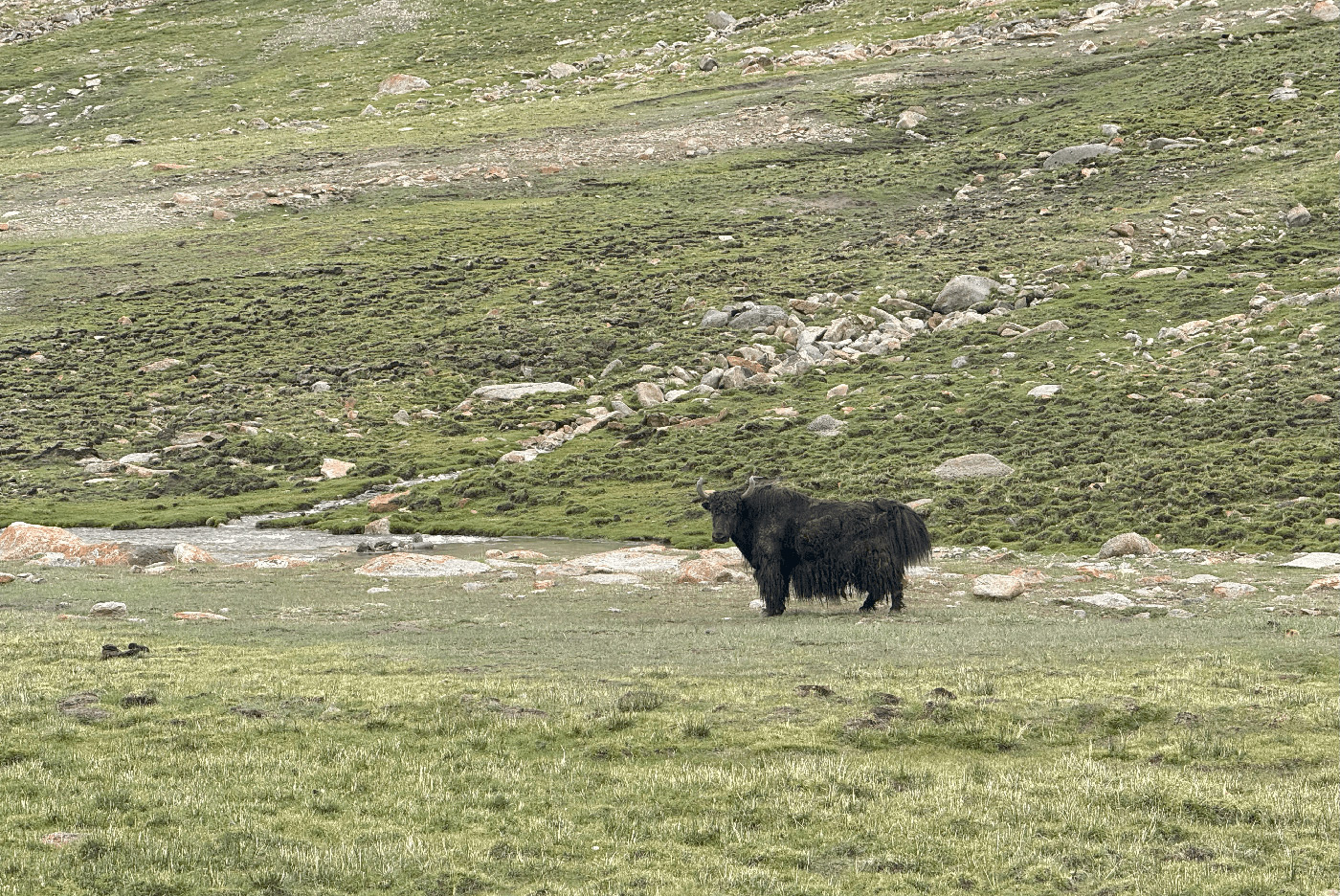
The land here belongs equally to humans and to the wild. Ladakh’s biodiversity is extraordinary, though elusive. The mountains are home to snow leopards and Himalayan wolves, ghost-like predators seldom glimpsed even by locals. Ibex, with their majestic spiralled horns, still roam the cliffs, as they did in the petroglyphs we had seen in Nubra. On this day, we were greeted by wild horses, kiangs (Tibetan wild asses), shaggy yaks, and playful marmots sunning themselves along the roadside. Each sighting felt like a blessing, a reminder that life flourishes even in such extremes.
Pangong Tso
When we finally arrived, the effect of Pangong Lake was immediate and overwhelming. Words fell away. Cameras clicked, but even as shutters snapped, everyone seemed to realise the futility – no photograph could hold what this place radiates. Before us stretched a body of water 134 kilometres long, reaching so far that its edges seemed to dissolve into the horizon. At our elevation, where vegetation barely survives, the surrounding mountains were bare and elemental, painted in striations of ochre, mauve, and stone-grey. Near the shoreline, however, green meadows and groves of willow trees softened the austerity.
Politically, Pangong is a contested frontier. Roughly 40% lies in India, 50% in Tibet (now under Chinese control), and the remaining 10% remains in dispute. Military presence is everywhere as a reminder that even a place of such serene beauty is entangled in human conflict.
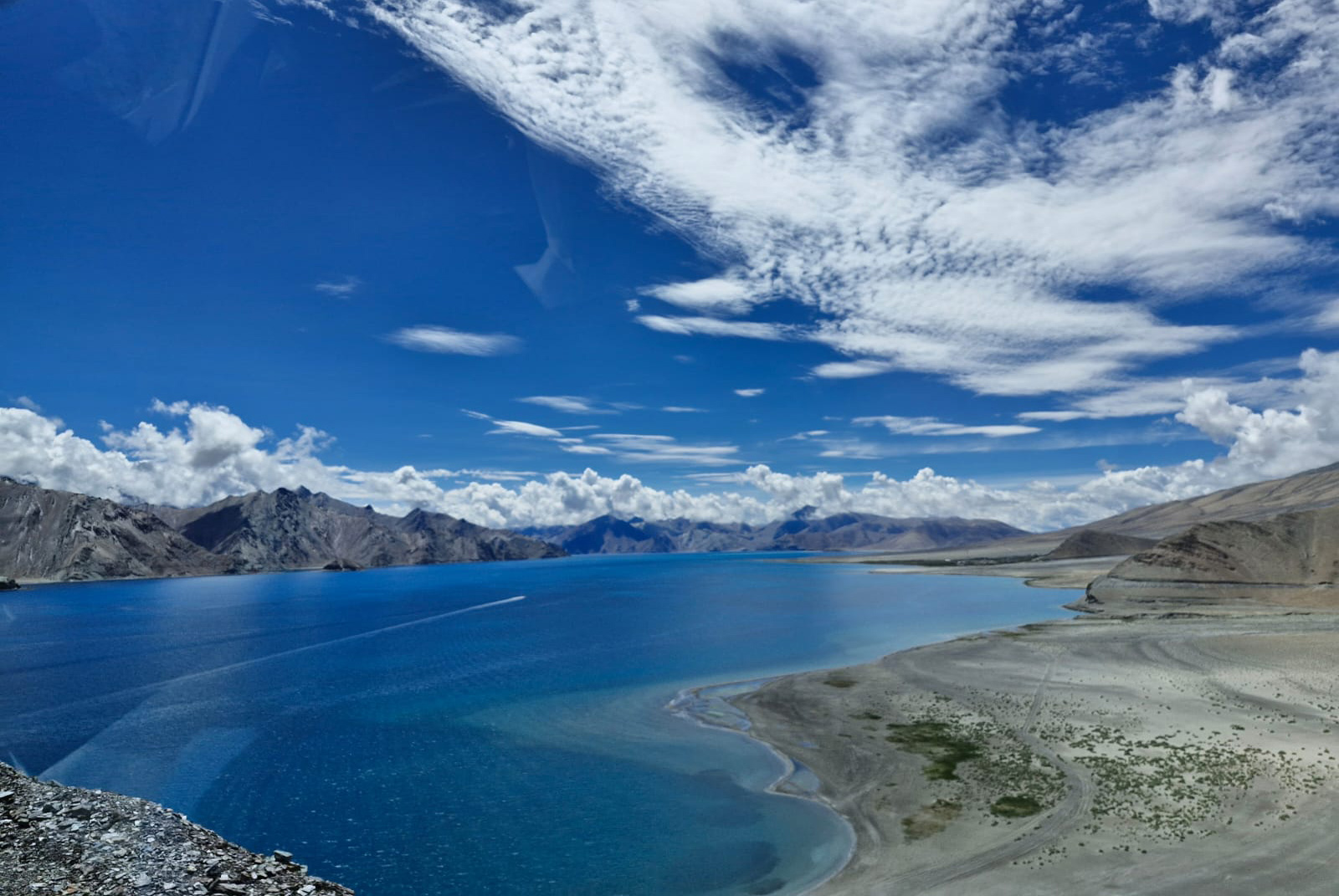
The lake itself is a marvel of paradox. Though it lies at such altitude, it is a saltwater lake, its mineral-rich waters fed by glacial melt carrying salts from the surrounding ranges. Unlike freshwater lakes, Pangong has no outlet. Its brackish composition means no fish live in its depths, though migratory birds, like the bar-headed goose and Brahminy duck, make seasonal visits.
Swimming and boating are prohibited, both to preserve its delicate ecology and because of the bitter cold. Yet standing on its shores, the stillness nourishes body and mind alike. Depending on the angle of the sun, the waters shift from turquoise green to sapphire blue, to inky navy at dusk.
The drive to our next resort was not without challenge. We encountered at least fifteen pagal nalas, ‘crazy streams’, seasonal torrents created by the day’s snowmelt. Some were shallow trickles; others surged into road-wide rivers. Each crossing felt precarious, as if the mountain wanted to test our determination to reach its heart.

From the resort, the view was otherworldly. Across the valley rose a snow-capped peak marking the border with China, silent yet charged with geopolitical weight. After a late lunch, we attempted a walk to the lakeshore, but icy winds swept down suddenly, carrying sheets of rain. We retreated, laughing at our failed expedition, and consoled ourselves with the thought that Pangong is as moody as it is majestic.
Locals had told us this was one of the best places on Earth for stargazing, where the night sky reveals not thousands but millions of stars, with the Milky Way arching in luminous clarity overhead. Sadly, the weather turned against us. Clouds smothered the heavens, and rain drummed through the night. Wrapped in blankets, we watched the storm instead, aware that in the Himalayas, nature decides when it will reveal its mysteries.
Returning to Leh
over Chang La (Pass)
Thursday, 24 July 2025
The next morning dawned brilliantly clear, as if the heavens had opened to reward our patience after the storm. A few soft clouds clung to the jagged ridges, framing the snow-capped peaks in painterly strokes. We drove a short distance to a secluded stretch of Pangong’s shoreline, a pristine beach where the turquoise waters lapped gently at the sand. Cameras came out quickly, but so did laughter. Soon we were skipping stones, splashing at the edges, and simply marvelling at how light and water could combine into such unearthly beauty.

After some play, our group gathered in stillness to practise the Infinity Meditation, a practice designed to expand awareness into boundless space. Standing before a lake that stretches 134 kilometres into the horizon, it felt perfectly suited. As we traced the flowing figure eight of infinity with our breath and awareness, it seemed that the shimmering waters mirrored our own consciousness.
By mid-morning we began our six-hour return to Leh, the route carrying us over the Chang La Pass, which rises to 5,360 meters (17,585 ft). Known as the ‘Pass of the South’, it is one of the highest motorable passes in the world, second only to Khardung La. Prayer flags fluttered furiously in the thin air, their colours sending ancient mantras into the wind. The air was thin, our steps unsteady, yet there was a kind of exhilaration in standing where only sky and rock truly belong.
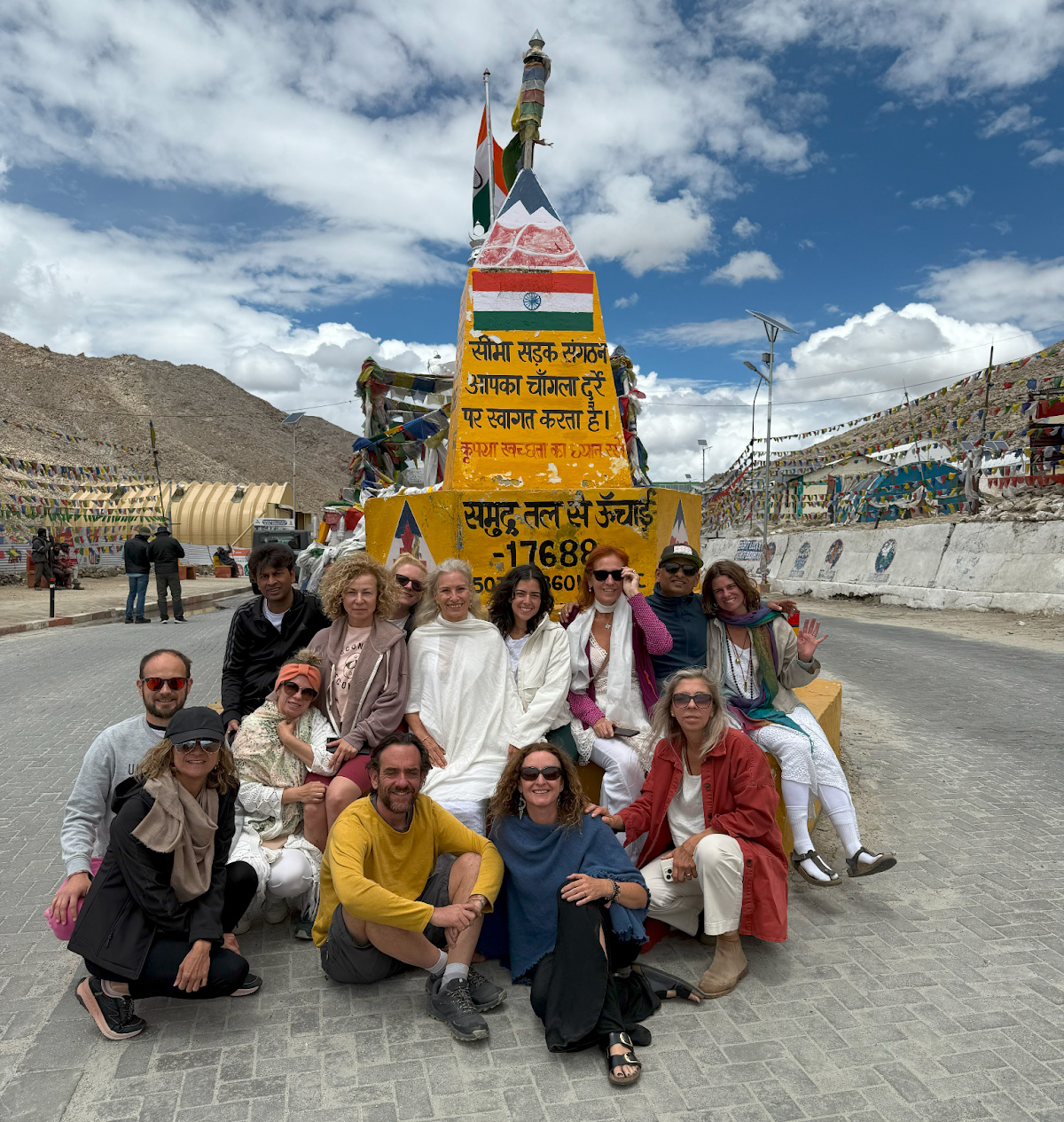
On the descent we stopped to meet Himalayan marmots, who proved to be natural comedians. Rather than scurrying away, they posed like seasoned performers, sitting upright and motionless, watching us tourists as intently as we watched them. Their golden-brown coats glistened in the sun, and for a moment it felt like a shared curiosity between two species, both fascinated by the other.
Further along, we entered a valley carpeted with wildflowers. Streams cascaded down from the melting snows, threading silver ribbons through meadows thick with purple asters and yellow primulas. The scent was intoxicating while the sight of butterflies dancing among the blooms made the valley feel like a living shrine. It was easy to see why Ladakh is often described as a land where the harshest mountains hold the gentlest surprises.
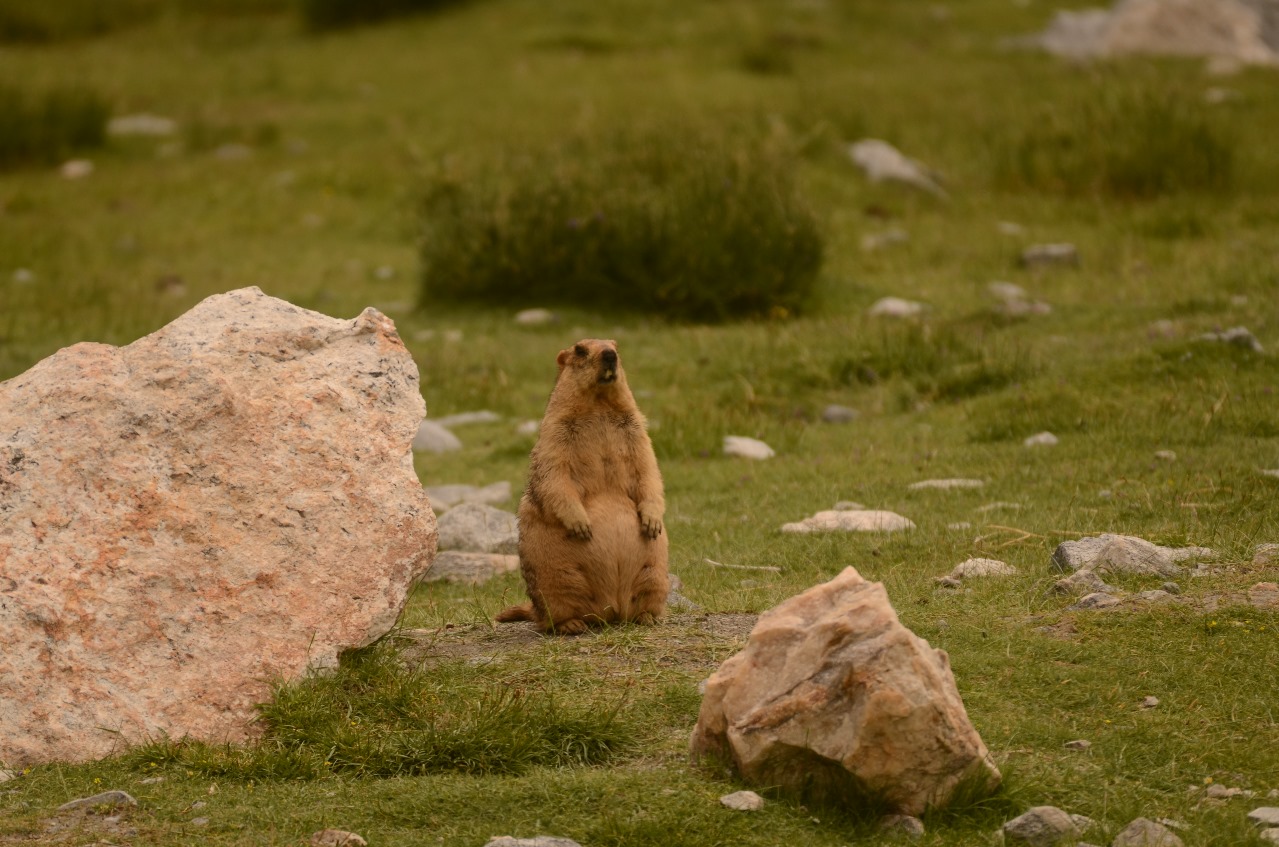
Back in Leh
Arriving at the Ladakh Eco Resort for our last two nights in this beautiful country, we were welcomed with platters of fresh fruit and tall glasses of carrot juice, simple gifts, yet deeply refreshing after hours of mountain roads. This being the final evening of our Sacred Tour, the day gave way to ceremony. As twilight fell, we gathered around a crackling bonfire. A vegan feast was served, abundant and colourful, and afterward each person in the circle shared their reflections. Gratitude wove through every voice: gratitude for the landscapes that had tested and blessed us, for the guides who had protected us, and for the fellowship that had grown between strangers turned companions.
Rahi, who had shepherded us with discipline and care throughout the journey, suddenly revealed another side. He stepped into the role of a DJ, and with a mischievous grin began to play music that pulled everyoneon to their feet. Under the Ladakhi night sky, stars veiled by wisps of clouds, we all danced.

Thank you
I would like to express my profound gratitude to Rahi, our organiser and guide (who can be contacted under antarrahi@gmail.com) and to Arnava, who has managed all of our food needs to perfection. He worked at length with each resort we stayed at, to make sure they would prepare healthy and delicious vegan food with no sugar, no garlic, no gluten and no MSG. His role has been valuable as it meant we could trust in having amazing meals throughout the entire journey.
Deep appreciation also goes to Danelle, who has been proactive in taking photos and posting this blog, selecting the photos, some by her, some by Rahi and some by members of our Tour.




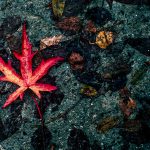
Comments are closed.